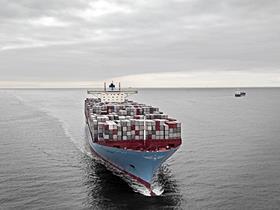
Maersk Line has announced a full-year loss of US$376m for 2016, well down on the positive result in 2015 of US$1.3bn.
According to the group, the result was hit by an average freight rate decrease of 19 per cent when compared with the previous year.
Revenue for the year was US$20.7bn, which is 13 per cent lower than 2015 when it stood at US$23.7bn, while volumes were 9.4 per cent higher as Maersk Line was able to win a 'significant market share'.
“We made a loss in 2016 due to a 19 per cent decline in freight rates,' explained Pierre Danet, CFO of Maersk Line. 'This loss is clearly unsatisfactory. On the positive side, we won market share, we continue to drive costs down and we increased our utilisation. We remain competitive. And we have a strategy that addresses the challenges in our industry. It will ensure that we continue to focus on customers, that we maintain our leadership position and that we again become profitable.'
In 2016, the container shipping demand growth was about 2-3 per cent and the global container fleet (capacity) growth was about 4 per cent when compared to 2015. The gap between capacity entering and exiting the industry was the 'lowest in many years', Maersk Line reported.
Compared to 2015, Maersk Line’s average freight rate declined with 19 per cent. Despite some positive developments seen in the second half of 2016, freight rates remain depressed and unsustainable.
“Overall, container shipping demand grew below our expectations,' Danet continued. 'However, in the last half of 2016, we experienced better industry conditions than in the first half. First due to a better supply demand situation, which resulted in an improvement in freight rates.'
Maersk Line expects global container shipping demand to increase by around 2-4 per cet in 2017.
“There are encouraging signs; however the market situation is still very challenging. Rates and demand levels remain low. That is why we will continue to manage our capacity tightly,” Danet added.



